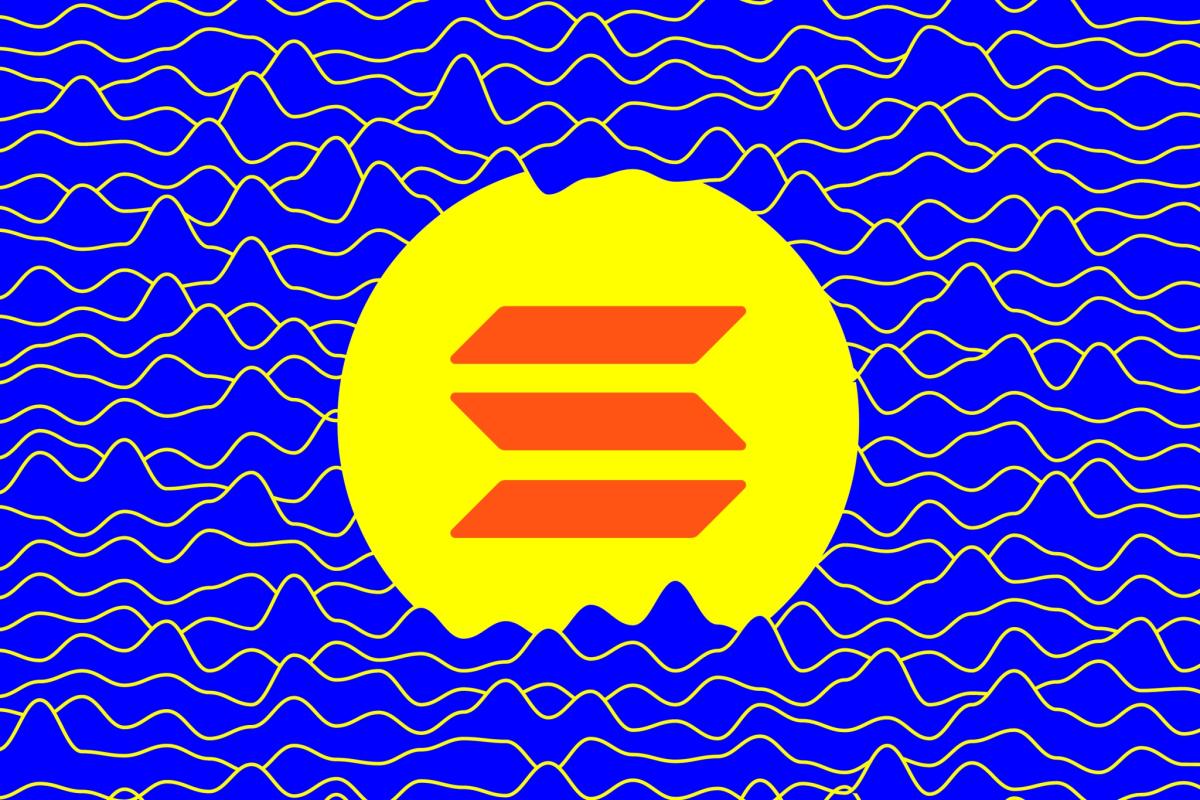How musicians can sell NFTs using public pressure: NO CRYPTO REQUIRED

NFTs have “revolutionized” the music industry as quickly as the boosters promised. But they still have an important role to play, and Brian Hazard found a service that helps make NFTs work for him and other indie musicians – NO CRYPTO REQUIRED.
of Brian Hazard of passive promotion
I have always been skeptical of cryptocurrency. is still.
Early last year when NFTs were at maximum hype, I sent out an email to my fans declaring:
I have never been able to make NFTs and I doubt I ever will. That would necessarily drag you into the crypto space, and I’m convinced that’s not a place we want to be.
Signed, a hypocrite [not actually in the email]
Fast forward one year to my debut NFT release.
What changed?
Fans were able to buy my track with cold hard cash, no crypto required.
This crucial difference separates Public Pressure from the rest of the NFT market and was the deciding factor when I tested their service.
Public Pressure is a distribution platform that sells music and digital collectibles packaged as NFTs, which are uniquely owned and can be resold on the secondary market.
They record sales on their own “omnibus wallet”, which means anyone can make a purchase without opening a private wallet.
The background to my public pressure
VP of Operations Vinny Piana, a longtime reader of the blog, reached out to me way back in October. Despite my reluctance to touch anything crypto-related with a ten-foot pole, he persuaded me to try Public Pressure and share my honest opinion.
And honestly, if I had known how much time and effort it would take, I would have passed. It must have taken at least 20 hours, not including writing this post. To be clear, this is not “passive promotion.”
It is not a bank on public pressure at all! I’m impressed with how dedicated their team is to getting the most out of every drop, even from a relatively unknown artist like myself.
Over the course of three months, I was on at least half a dozen calls.
First I had to create a wallet using an app called Metamask. It’s not required to get paid by Public Pressure, but if an owner of my song ever resells it, I’ll get a commission paid in crypto.
I then registered on the site, filled out an artist application and linked my wallet to my profile.
After that I had a conversation with the NFT director. We have set a release date of January 20. I provided the track, artwork, bio and press photos.
I was given several opportunities to review the exact wording of the case before giving final approval. Once it is on the blockchain, changes are no longer possible.
A week before the drop, I had a conversation with the marketing team: Ray (Artist Community Growth Director), Federica (Facebook & Instagram), Yvonne (PR), Yigithan (Twitter) and Cristiano (Discord & Telegram).
What a team! I was seriously impressed to have so many people working on my behalf in so many corners of the internet.
Some of these corners didn’t get as much attention as others, but I’m getting ahead of myself.
Promote my public pressure drop
Giulia, the A&R director, kept everyone on task and helped guide my efforts to promote the release.
Ray provided an email template to send to my fans that I thought was absolutely hilarious. Not because it necessarily was bad — it was professional enough — but because it was completely out of character for me. It ended with “rock on!”
Now I regret not sending it out verbatim to see how people would react. Talk about a missed opportunity!
The morning of the release we held my first ever Twitter Spaces, which is basically an audio-only chat room. Although I don’t use Twitter much anymore, I still have 2 million followers from my glory days. The visibility of the live session in the app brought in a steady supply of spontaneous listeners in addition to those who purposefully tuned in.
Ray and I had a great conversation about the platform, the potential of web3, my artist history and the story behind the track I released. The team did a good job of promoting it on their profiles, both before and after the session.
We had a total of 547 listeners and it is still available for playback here if you want to make it 548.
We followed it up with an Instagram Live, which was a ghost town by comparison. To be fair, I have less than 6K followers on Instagram and Public Pressure recently migrated to a new profile.
Despite several reminders, I never heard back about Discord or Telegram. I installed the Telegram app on my phone, which will come in handy if I ever decide to become a conspiracy theorist.
The first thing I saw on Telegram was a thread consisting entirely of users spamming the phrase “/PRAISE_THE_PODS.” How cryptic!
My public pressure drop
Before my drop even … dropped, it was promoted on the publicpressure.io home page.
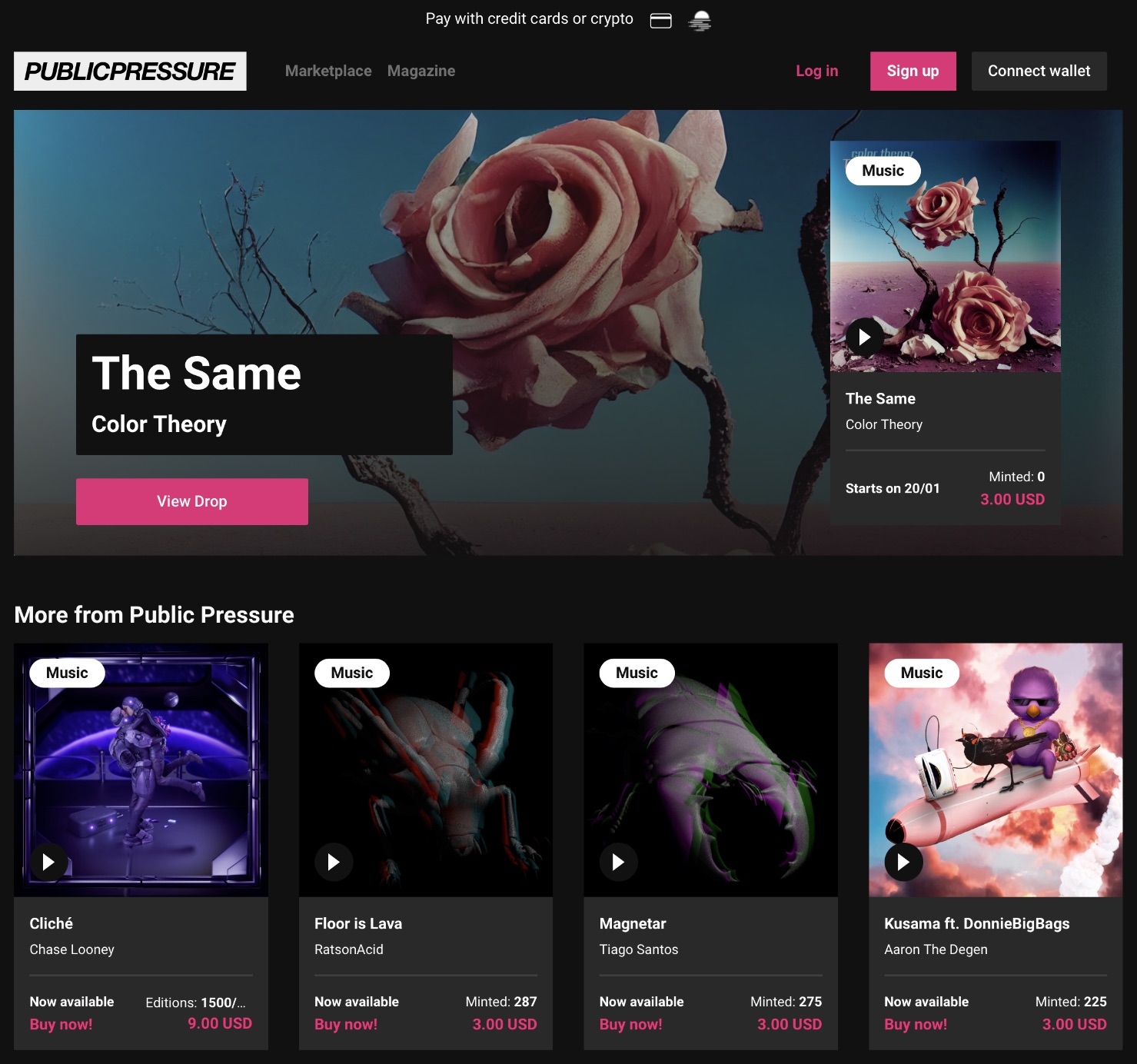
Today my release page looks like this:

As you can see, 72 NFTs have been minted to date = $216 raised. Compared to most of the offerings on their marketplace, that’s pretty good. Only free downloads tend to get more action.
I bought one myself to see how it works. You never know – it might be worth something one day!
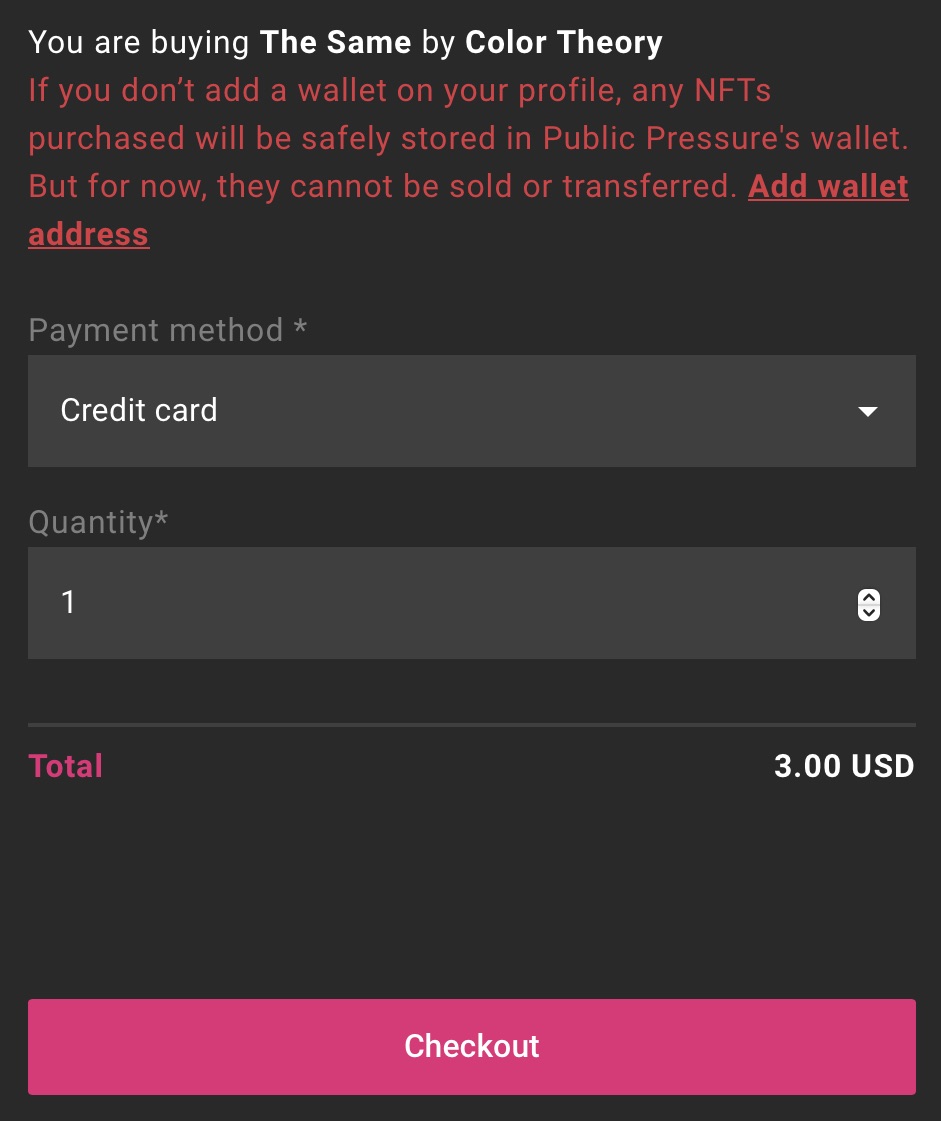
Oh well, I got #19.
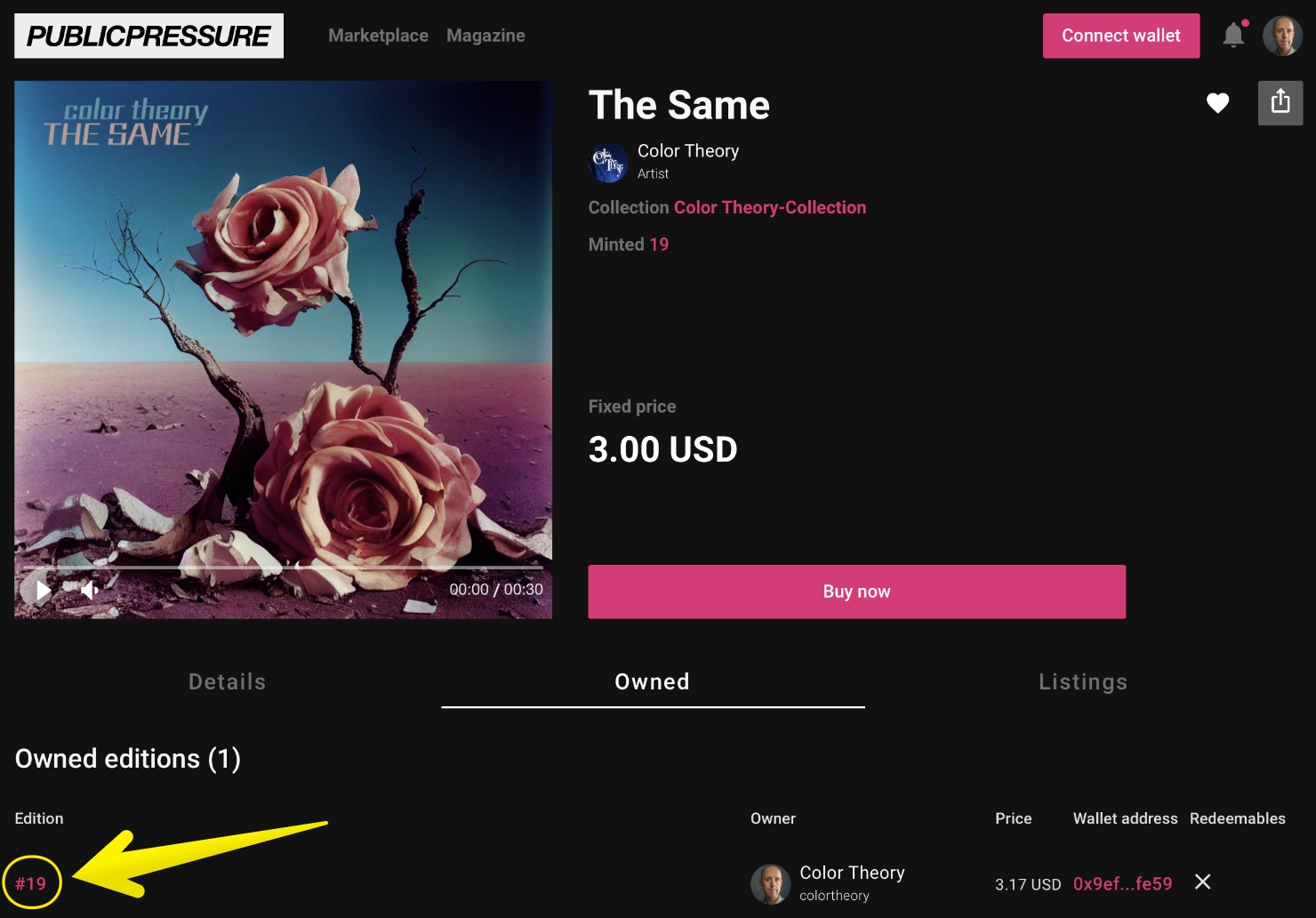
Public Pressure pays the artist 80% on the 15th of every month. As promised, I received $144.82 from PayPal, which I assume is 80% less transaction fees.
That means they received about $36 for all their efforts, which is a crime! Altogether, they almost certainly devoted more time to my drop than I did. I feel guilty!
Is public pressure your thing?
To be fair, I was basically promoting with one hand tied behind my back.
I hinted at future benefits to owners but did not commit to any. I didn’t make a convincing case for why fans should pay $3 for this particular song when the rest are $1 on Bandcamp. I could have promised remixes, offered strains, given early access to my next release – the sky’s the limit!
But I wasn’t willing to offer anything exclusive because I’m already fully committed to my patrons on Patreon. In fact, they already had the track months before release.
Public Pressure even offered to grandfather in my patrons on the platform, but I don’t think many of them would bother to create an account.
So that’s me. What about you?
If you have a fan base but haven’t tried to monetize them, Public Pressure offers an ideal future-proof platform to do just that, and they’ll hold your hand every step of the way.
They will connect you to their crypto community and help promote releases on all major platforms, with an emphasis on Twitter and Discord where web3 fans gather.
If that interests you, the next step is to fill out the onboarding form for artists here or for labels here.
I’m really surprised they don’t charge an upfront fee or at least a bigger percentage, considering how much work is involved!
While my results didn’t exactly rock the platform (rock on!), the best is yet to come for Public Pressure.
They have a drop with fashion brand Diesel next month, and they already have a presence in the Metaverse, which is what “/PRAISE_THE_PODS” refers to. The pods are headphones that can be used in the game.
Check out this massive Public Pressure city in Minecraft that takes four hours to traverse!

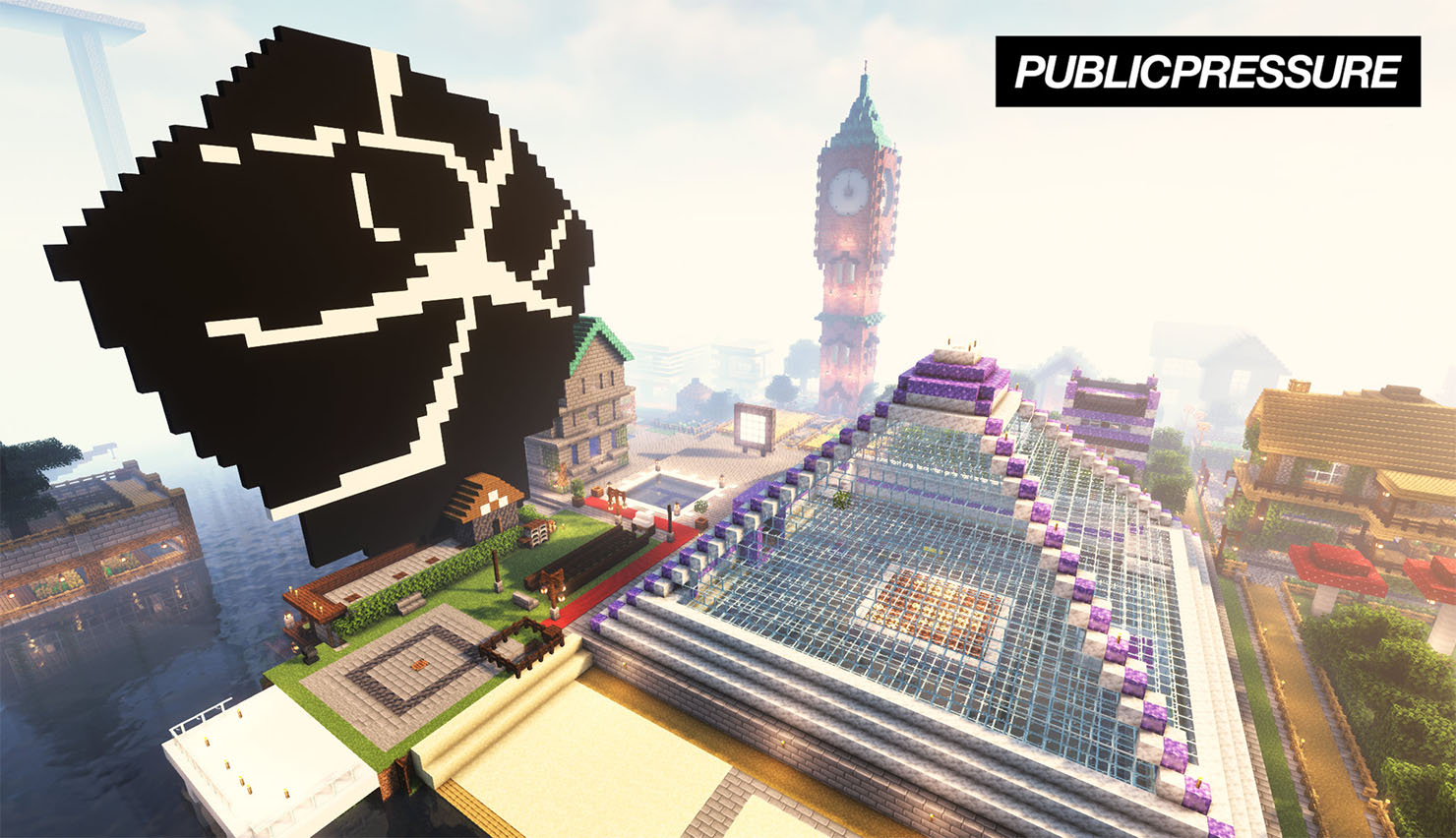
Some artists even have their tracks available as collectibles in a Metaverse game!
As I said before, the sky is the limit. We’ve only just begun to realize the promise of web3 and I don’t even feel qualified to talk about it, so I’ll shut up now.
Brian Hazard is a recording artist with over twenty years of experience promoting a dozen Color theory album, and lead mastering engineer and owner of Resonance mastering in Huntington Beach, California. His Passive promotion blog emphasizes “set it and forget it” methods of music promotion. See more of his advertising escapades in his How I’m promoting my music this month e-mail newsletter.


